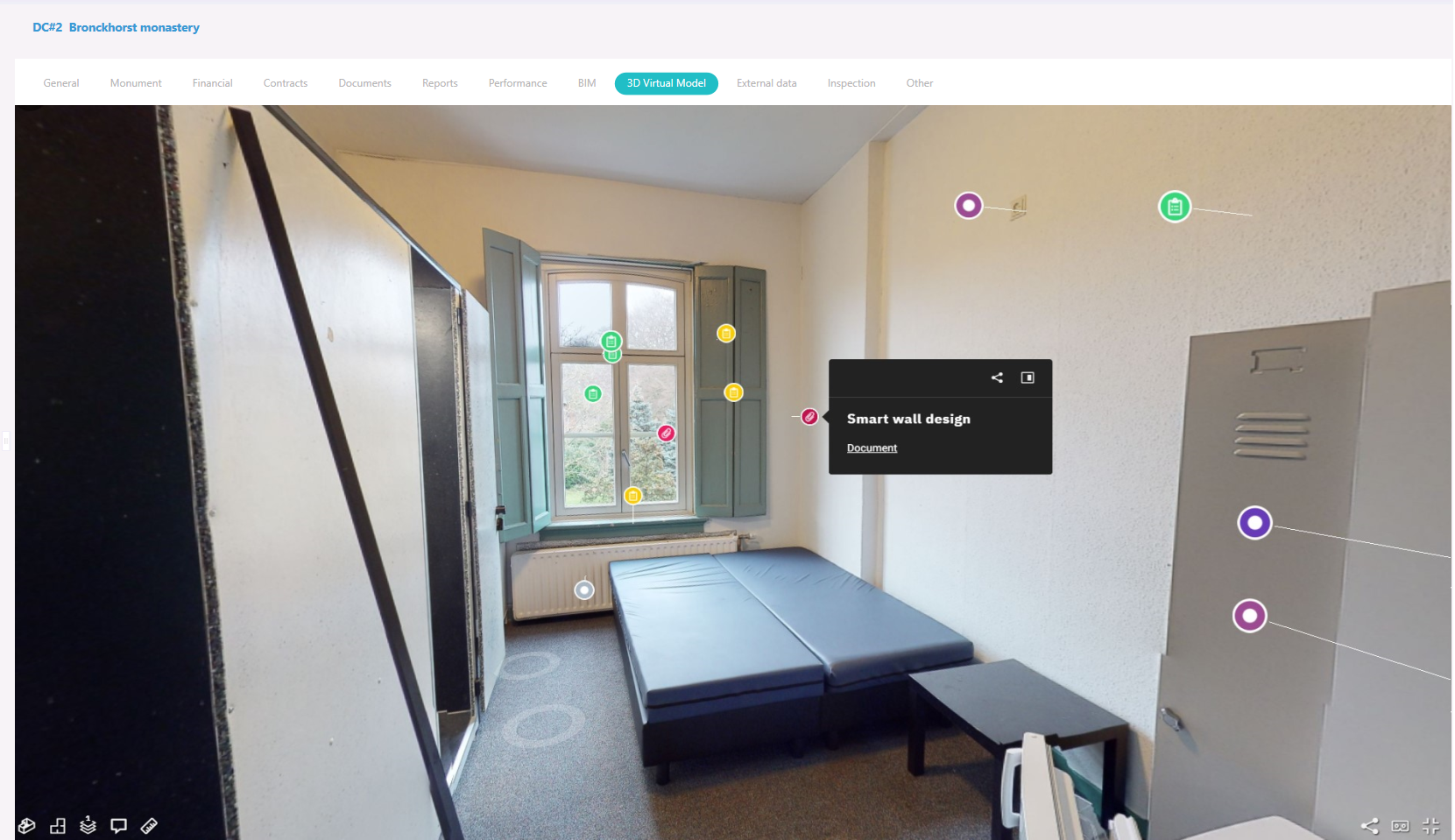Revolutionizing renovation with 3D Virtual Models
The construction industry faces constant challenges, and renovation initiatives, in particular, present a range of issues. These initiatives often encounter safety concerns, personnel shortages, productivity constraints, technology challenges, and regulatory complications, which frequently result in cost overruns and delays. In addition, the construction industry has been lagging in embracing digitalization, highlighting previous unsuccessful initiatives, stakeholder resistance, and integration issues as barriers. Indeed, it remains one of the least digitized industries.
The INPERSO project, which combines industrialisation with personalisation in renovation efforts, emerges as a solution to these pressing concerns. It makes use of digital technology to improve data flow and brings novel ways, such as enhanced prefabricated walls and 3D printing to reduce waste, prices, and building schedules. It contributes to the larger goal of making the building sector more sustainable and efficient, in addition to immediate problem-solving.
Among the many changes taking place in the renovation industry, 3D virtual modelling stands out as a game changer. This technology creates realistic digital representations of buildings that can be used for a variety of purposes, from planning through construction to maintenance. 3D virtual models (3DVMs) are obtained through 3D scans, where a building is scanned with a suitable camera or scanner that is able to capture the smallest details. Pictures are then transformed into a 3D virtual model, which is an exact digital representation of the physical building. Having access to a 3D model of a building comes with a wide range of benefits to both owners and facility managers. One of the main advantages of using 3D models of buildings is the ability to locate objects, take measurements, mark important spaces or elements and provide quick and easy navigation for users. DEMO Consultants – a project partner of INPERSO - is at the forefront of developing and applying 3DVMs in their day-to-day operations. DEMO Consultants, an established collaborator with over 27 years of experience in the real estate and infrastructure sectors, has embraced this revolutionary technology. They have not only established themselves as key players in the application and advancement of photogrammetry, 3D scanning, virtual modeling, and building information modeling (BIM) solutions in the built environment, but they have also added significant value to digitalization and innovative approaches in renovation projects as a result of their participation in the INPERSO project.
DEMO Consultants' RE Suite software solution is a great example of how virtual 3D modeling can be used to create highly detailed and accurate representations of buildings and their components. RE Suite integrates 3DVM into its capabilities, enabling designers and engineers to create digital models of buildings that include information not only on the building's physical dimensions and layout, but also on materials, systems and performance characteristics. The software is ideal for BIM-based processes as it offers a faster, more efficient and more accurate way to model buildings compared to traditional 2D drawings. It also allows a seamless connection between the elements of BIM and 3DVMs giving an enhanced, detailed overview of status and supporting better design processes.
Figure 1: Dollhouse view of the Dutch demonstration case in INPERSO
Specifically, within the INPERSO project, DEMO Consultants are focused on improving the performance and renovation of (historical) buildings by using 3DVMs to create the exact digital representation of the objects. These models can be used to create simulations that can predict how these buildings will perform under different conditions, allowing engineers and designers to come up with better solutions to improve their performance. With regards to historical buildings and monuments, regulations are strict about possible refurbishment and interventions, thus obtaining 3DVMs highly supports planning and design processes to match the interventions with the actual historical characteristics.
In a more general utilisation within the built environment, the tool and methodological approach developed by DEMO could offer various insights into building management cycles. On the one hand, it provides a baseline as-is record of the status of buildings. On the other hand, it allows for enriching the models with all kinds of information that are relevant for any construction project. Therefore, they represent more than just a digital copy of a real-world object. Combining 3DVMs with data or information (e.g. product sheet of a new window) enables a more efficient, data-driven design - and communication among stakeholders - for any intervention; be it renovation or regular maintenance. Talking about maintenance and the operation phase of buildings and assets, 3DVMs have a great potential to further enhance and simplify specific processes through linking information directly to specific elements in the 3DVM. DEMO Consultants will further develop their unique approach (Figure 2) within the scope of INPERSO to further utilize 3DVMs throughout the whole lifecycle of buildings – including design, renovation, and operation activities.
Figure 2: Enriched 3DVM of the Dutch demonstration case
It could be concluded that 3D virtual modeling has become an essential tool for the construction industry and DEMO Consultants is at the forefront of its use. Through INPERSO, DEMO is focusing on further improving how 3D virtual modeling could support building design, construction and maintenance, increasing efficiency and accuracy throughout the process. The aim is to use this knowledge and outcomes of the project for further market expansion, covering the full range of built environments.
If you are curious to know more about DEMO’s 3D virtual modeling services and projects, please visit: https://www.demobv.nl/nl/3d-virtual-models


